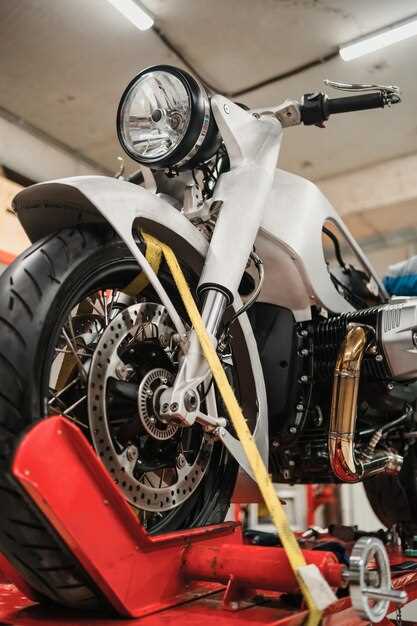
Achieving the perfect ride on a motorcycle goes beyond engine power and tire grip; it heavily relies on correct suspension settings. Proper suspension adjustment is essential for enhancing stability, comfort, and overall performance. It allows riders to tailor their motorcycles to their unique preferences and the specific demands of various riding conditions.
Understanding the intricacies of motorcycle suspension is crucial. Factors such as rider weight, riding style, and terrain can significantly influence the bike’s handling. An incorrectly set suspension can lead to poor handling, increased tire wear, and even safety issues. Therefore, mastering suspension adjustment not only improves ride quality but also enhances rider confidence.
This guide will delve into the essential components of motorcycle suspension systems, providing clear methodologies for adjustments. With practical tips and a focus on both front and rear suspensions, riders will learn how to achieve optimal handling characteristics and comfort tailored to their riding experience.
How to Set Your Front Fork for Better Handling

Adjusting the front fork of your motorcycle is vital for improving handling and stability. A well-tuned front suspension helps maintain control, enhances cornering ability, and absorbs bumps effectively. Here’s how to achieve optimal settings for your front fork.
1. Understand Your Fork Type: Different types of front forks, such as telescopic or leading-link, have distinct characteristics. Familiarize yourself with your motorcycle’s specific fork type and its adjustment capabilities. This knowledge forms the foundation for any adjustments you make.
2. Adjust the Preload: Preload affects the initial sag of your fork. To set preload, measure the distance between the axle and a fixed point on the bike with no rider and then again with the rider on board. Ideally, the sag should be around 30% of the total travel. Adjust the preload by turning the adjuster until the desired sag is achieved.
3. Fine-tune Compression Settings: Compression damping controls the rate at which the fork compresses under load. Start with the manufacturer’s recommended settings, then adjust based on your riding style and the terrain. Increasing compression can provide a firmer feel, while decreasing it offers more plushness for comfort.
4. Set Rebound Damping: Rebound damping influences how quickly the fork returns to its original position after compression. A slow rebound can lead to a sluggish feel, while too fast can cause instability. Adjust the rebound settings until you achieve a balance between comfort and control, ensuring the fork returns smoothly without bouncing excessively.
5. Test and Evaluate: After making adjustments, it is crucial to conduct test rides in various conditions. Pay close attention to how the motorcycle handles in turns, over bumps, and during braking. Return to the garage to make further adjustments as needed based on your performance evaluations.
6. Regular Maintenance: Don’t neglect regular fork maintenance. Change the fork oil and inspect seals periodically to ensure optimal performance. Well-maintained forks will provide consistent handling characteristics, enhancing your riding experience.
By methodically adjusting your front fork settings, you will experience improved handling and overall ride quality. Focus on these adjustments as part of your regular motorcycle maintenance routine, keeping in mind that every rider may have different preferences based on their individual style and riding conditions.
Fine-Tuning Rear Shock Settings for Comfort and Stability

Adjusting the rear shock settings on your motorcycle is essential for achieving a ride that is both comfortable and stable. A properly tuned rear shock can significantly enhance your handling, cornering, and overall riding experience. Here are key aspects to consider for fine-tuning your rear shock settings.
Understanding Your Shock Absorber
Before making adjustments, familiarize yourself with the components of your rear shock. Most shocks feature settings for preload, compression, and rebound damping. Each setting plays a critical role in how the motorcycle reacts to bumps, obstacles, and weight distribution.
Preload Adjustment
Preload controls the initial tension in the spring. Increasing preload raises the ride height, which can improve cornering clearance and reduce the risk of bottoming out. However, excessive preload can lead to a harsh ride. Start by adjusting the preload to your weight and luggage, aiming for a 1.5 to 2 inches of sag when seated on the bike. This ensures that the suspension can absorb shocks effectively while maintaining stability.
Compression Damping
Compression damping influences how quickly the shock compresses when hitting bumps. A stiffer setting provides more resistance against bottoming out, which is beneficial during aggressive riding or when carrying a passenger. Conversely, a softer setting enhances comfort on rough roads. Adjust the compression damping incrementally, testing the bike’s response after each adjustment to find the optimal balance between comfort and control.
Rebound Damping
Rebound damping controls the speed at which the shock returns to its original position after compression. If the rebound is too fast, the bike may bounce, leading to instability, especially in corners. If too slow, the bike may feel sluggish and unresponsive. Start with a mid-range setting and make changes based on feedback during rides. The goal is to ensure the shock returns smoothly without causing excessive oscillation.
Testing and Feedback
After making adjustments, take your motorcycle for a test ride. Pay close attention to how it handles over various surfaces. Evaluate comfort when riding on uneven terrain as well as the bike’s stability during cornering and braking. Adjust settings gradually, collecting feedback after each ride, as this will help you hone in on the preferred settings for your riding style and conditions.
Conclusion
Fine-tuning rear shock settings is a valuable skill that can transform your riding experience. By adjusting preload, compression, and rebound damping appropriately, you can achieve a motorcycle setup that maximizes both comfort and stability, allowing for a more enjoyable and confident ride.
Understanding Suspension Components and Their Impact on Performance
The motorcycle suspension system comprises several key components, each playing a critical role in overall performance and handling. Understanding these components can significantly enhance the rider’s experience and safety.
Forks are the front suspension elements that absorb shocks from the road. They come in various types, including telescopic and inverted forks. The choice of fork affects steering precision, stability, and comfort. Proper adjustment of fork preload and damping settings can optimize ride quality and control, especially in varying terrain conditions.
Shock Absorbers are vital for the rear suspension, providing stability during acceleration, braking, and cornering. They manage the bike’s vertical movement, ensuring the wheel maintains contact with the ground. Adjusting the rebound and compression settings allows riders to tailor the shock’s response, enhancing grip and comfort based on riding style and road conditions.
Springs support the bike’s weight and determine ride height. The spring rate must match the rider’s weight and intended use; a stiffer spring provides better support for aggressive riding, while a softer spring offers a more comfortable ride over bumps. Properly adjusted springs contribute to the bike’s handling characteristics and overall balance.
Linkages and Adjusters connect various suspension components, allowing for precise tuning. Linkages impact the suspension’s leverage ratios, affecting how the bike responds to bumps and turns. Additionally, adjusters for preload, compression, and rebound settings enable riders to fine-tune their suspension to react appropriately under different riding conditions, from smooth highways to rugged trails.
The interplay between these suspension components determines how well a motorcycle performs under various conditions. A well-adjusted suspension system can greatly enhance cornering stability, reduce tire wear, and improve overall rider comfort. Regular maintenance and adjustments according to riding needs ensure that the suspension remains effective and responsive, ultimately elevating the riding experience.